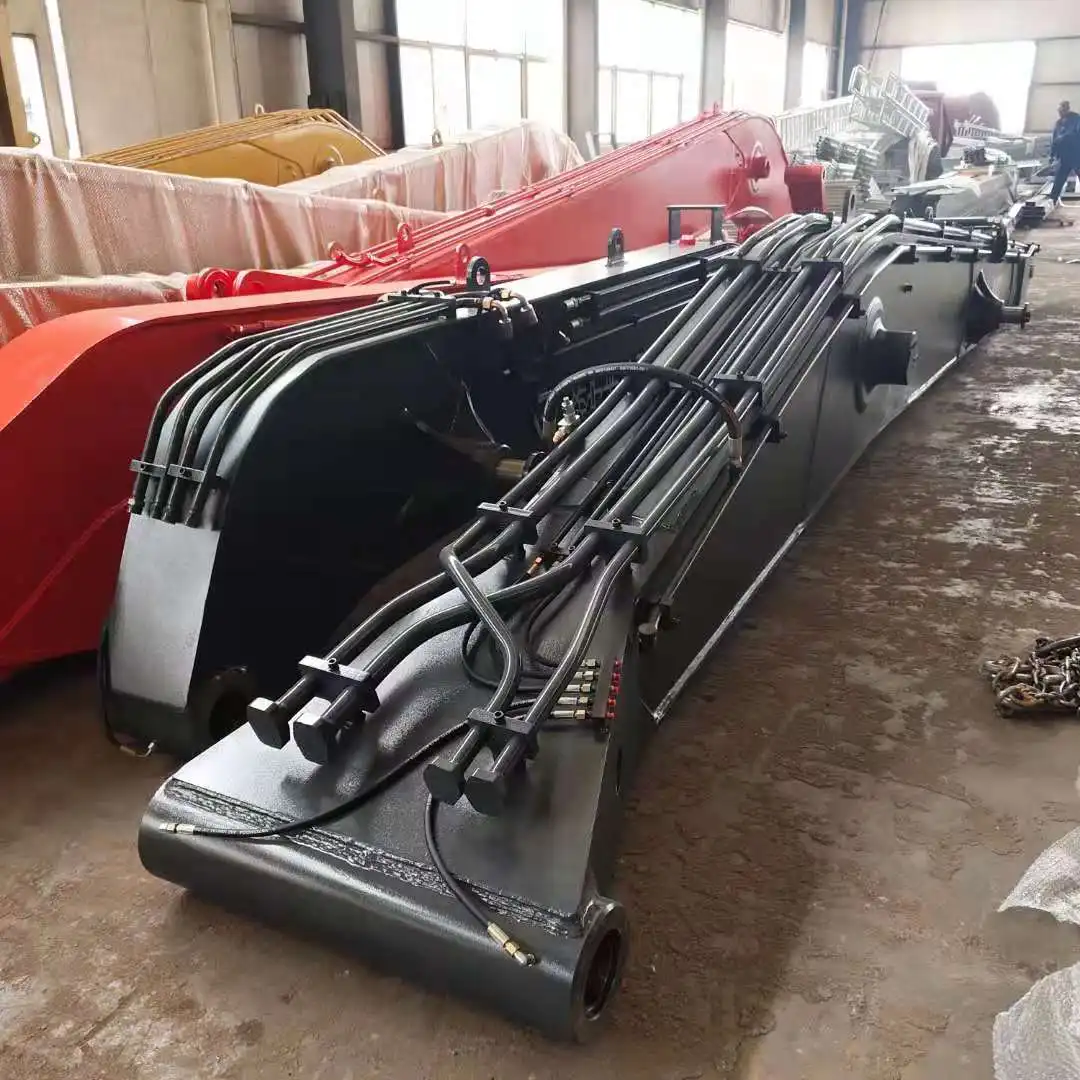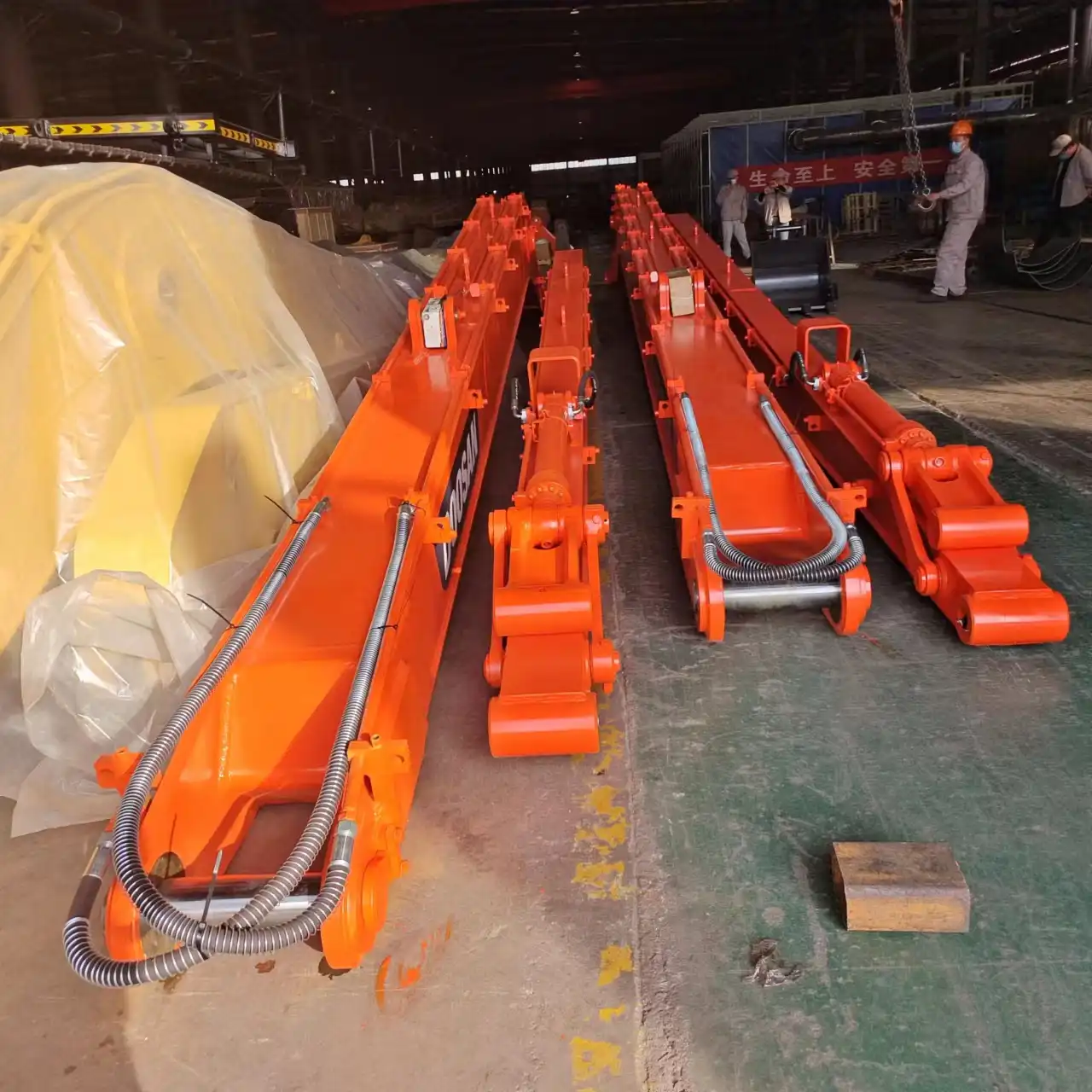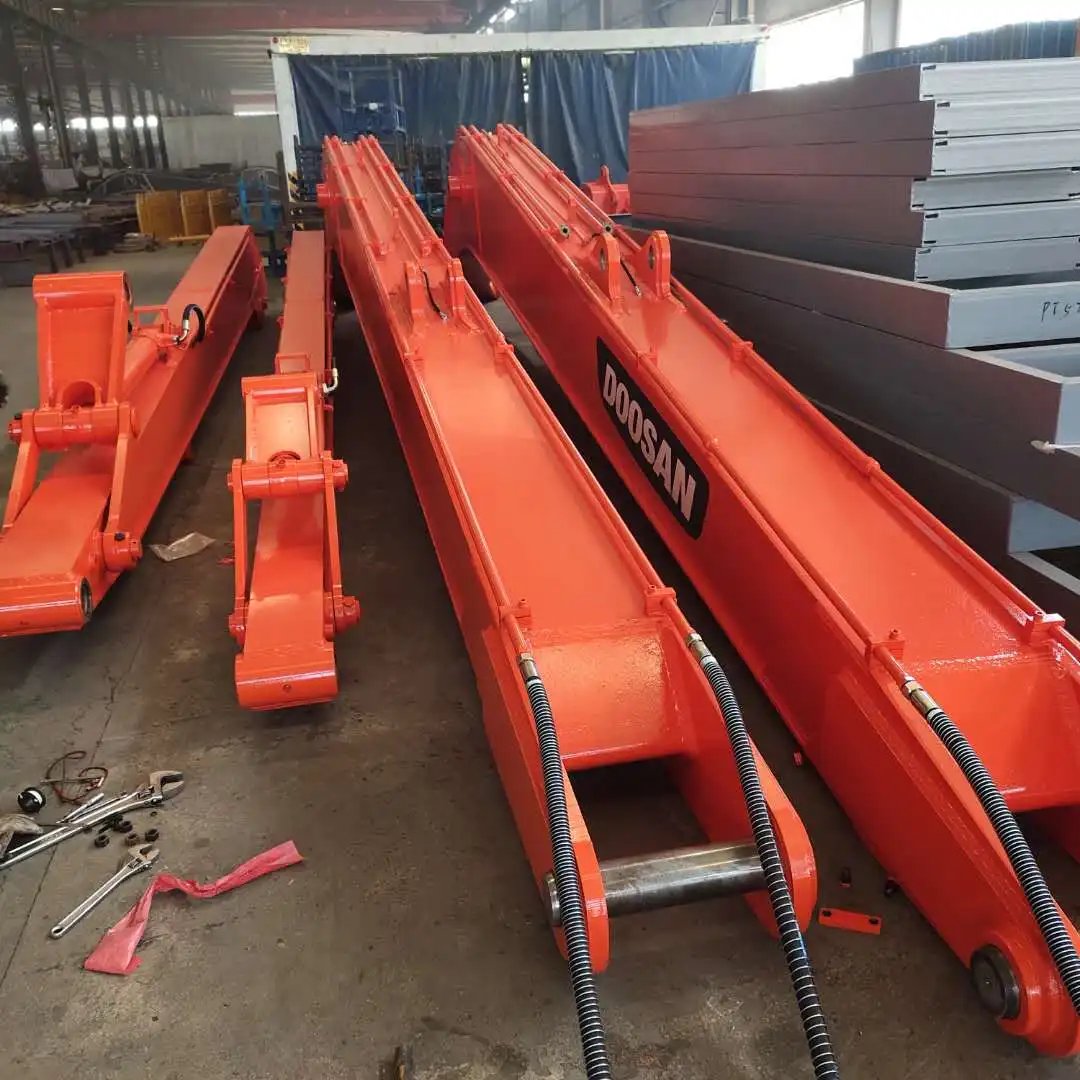Long Boom Excavator Reach Arm Maintenance
Maintaining your long boom excavator reach arm isn't just about keeping equipment running—it's about protecting your investment and ensuring operational safety. These specialized attachments, designed to extend working reach up to 25 meters, require dedicated maintenance protocols that differ significantly from standard excavator care. Proper maintenance routines can dramatically extend equipment lifespan while preventing costly breakdowns during critical project phases. Understanding the unique stress patterns, hydraulic demands, and structural requirements of extended reach systems helps operators develop effective maintenance strategies. When you consider that a well-maintained reach arm can operate efficiently for thousands of hours while poorly maintained units may fail prematurely, the importance of systematic care becomes clear. Regular maintenance scheduling, combined with operator awareness of warning signs, creates a foundation for reliable performance across demanding applications like demolition, construction, and specialized lifting operations.

Regular Structural Inspections
Visual Assessment Protocols
Beginning each maintenance cycle with thorough visual inspections establishes the foundation for effective long boom excavator reach arm care. Operators should examine all boom sections for signs of metal fatigue, including hairline cracks that often appear near weld joints and high-stress connection points. Paint discoloration or flaking frequently indicates underlying structural issues that require immediate attention. Experienced technicians recommend using magnifying equipment to inspect critical areas where stress concentrations are highest, particularly around pivot mounting brackets and hydraulic cylinder attachment points.
Documentation plays a crucial role in tracking structural changes over time. Creating detailed inspection logs with photographic records helps identify developing problems before they become catastrophic failures. Pay special attention to areas where different materials meet, as thermal expansion differences can create stress points that weren't apparent during initial installation. Weather exposure, especially in marine or industrial environments, accelerates corrosion processes that compromise structural integrity.
Weld Joint Evaluation
Weld integrity represents perhaps the most critical aspect of structural maintenance for extended reach arms. These joints experience tremendous stress loads that can exceed manufacturer specifications during demanding operations. Magnetic particle testing or dye penetrant inspection methods reveal micro-cracks invisible to casual observation. Professional welding inspection should occur annually, with more frequent checks recommended for units operating in harsh environments or experiencing heavy usage patterns.
Understanding weld failure patterns helps predict potential problem areas. Fatigue cracks typically initiate at the toe of welds where stress concentrations are highest. Heat-affected zones adjacent to weld beads often show different metallurgical properties that can lead to preferential failure under cyclic loading. Operators working with high-strength steel alloy components must recognize that field repairs require specific welding procedures and qualified personnel to maintain structural integrity.
Stress Point Analysis
Extended reach arms experience complex loading patterns that create stress concentrations at predictable locations. Pin bushings and pivot points bear significant loads during operation, requiring careful monitoring for wear patterns and dimensional changes. Measuring pin hole diameters and checking for elongation helps predict when replacement becomes necessary before catastrophic failure occurs.
Boom section connections deserve particular attention because they transfer loads between segments while allowing articulation. Excessive play in these joints indicates wear that reduces operational precision and increases stress on adjacent components. Using precision measuring tools to track dimensional changes over time provides quantitative data for maintenance planning and replacement scheduling.

Hydraulic System Maintenance
Fluid Quality Management
Hydraulic fluid serves as the lifeblood of any long boom excavator reach arm system, requiring meticulous attention to quality and contamination control. Extended reach configurations place additional demands on hydraulic systems due to increased line lengths and pressure requirements. Regular fluid analysis reveals contamination levels, additive depletion, and breakdown products that indicate system health. Particle contamination represents the leading cause of hydraulic component failure, making filtration system maintenance absolutely critical.
Temperature management becomes increasingly important in extended reach applications where hydraulic lines may be exposed to environmental extremes. High temperatures accelerate fluid degradation while cold conditions increase viscosity and reduce system responsiveness. Monitoring fluid temperature during operation helps identify cooling system inadequacies or excessive load conditions that require operational adjustments.
Pressure Testing Procedures
Systematic pressure testing identifies developing problems before they cause operational failures. Extended hydraulic circuits in reach arm systems are particularly susceptible to pressure losses due to increased line lengths and connection points. Establishing baseline pressure readings across all circuits provides reference points for future comparisons. Pressure drop measurements help locate internal leakage in cylinders, valves, and line connections.
Relief valve testing ensures safety systems function properly under maximum load conditions. These protective devices prevent over-pressurization that could cause catastrophic hydraulic component failure. Testing should include both static pressure relief and dynamic response characteristics to verify proper operation across the full range of operating conditions.
Component Replacement Schedules
Proactive component replacement prevents unexpected failures that can strand equipment during critical operations. Hydraulic seals in reach arm systems experience accelerated wear due to extended stroke lengths and increased contamination exposure. Developing replacement schedules based on operating hours and environmental conditions helps minimize unexpected downtime while optimizing maintenance costs.
Filter replacement represents one of the most cost-effective maintenance activities for hydraulic systems. Bypass filtration systems particularly benefit extended reach applications by continuously cleaning hydraulic fluid during operation. Understanding filter efficiency ratings and replacement indicators ensures optimal contamination control without unnecessary maintenance costs.

Lubrication of Moving Parts
Lubrication Point Identification
Extended reach arms contain numerous lubrication points that require regular attention to prevent premature wear and ensure smooth operation. Pin and bushing assemblies at articulation points experience high loads and require high-quality grease formulated for extreme pressure applications. Each lubrication point may have different service intervals based on load characteristics, environmental exposure, and accessibility for maintenance.
Proper lubricant selection depends on operating temperature ranges, load characteristics, and environmental conditions. Marine environments require corrosion-resistant formulations while dusty conditions demand lubricants with excellent sealing properties. Understanding manufacturer specifications ensures compatibility with existing lubricants and prevents chemical incompatibility issues that could compromise component protection.
Application Techniques
Effective lubrication requires proper techniques that ensure complete coverage while avoiding over-lubrication that can attract contamination. Using calibrated grease guns helps deliver consistent quantities while pressure monitoring prevents seal damage during greasing operations. Purging old grease through fittings removes contaminated lubricant and ensures fresh protection reaches critical surfaces.
Timing lubrication activities with operational schedules maximizes effectiveness while minimizing equipment downtime. Lubricating components when they're warm ensures better penetration and distribution throughout bearing surfaces. Cold weather operations may require pre-heating lubricants to ensure proper flow characteristics during application.
Monitoring and Documentation
Systematic documentation of lubrication activities creates accountability while providing data for optimizing maintenance intervals. Tracking lubricant consumption helps identify components experiencing accelerated wear that may require more frequent attention or investigation. Unusual grease requirements often indicate developing problems that require corrective action before component failure occurs.
Visual inspection during lubrication activities provides opportunities to identify developing problems like seal leakage, contamination, or unusual wear patterns. Experienced technicians can detect subtle changes in component condition that indicate need for more detailed inspection or preventive replacement activities.
FAQ
①How often should I inspect my long boom excavator reach arm?
Daily visual inspections should be standard practice, with detailed structural inspections monthly and comprehensive professional evaluations annually.
②What are the most common failure points in extended reach systems?
Pin bushings, hydraulic seals, and weld joints at high-stress locations represent the most frequent failure points requiring preventive attention.
③Can I perform hydraulic maintenance myself?
Basic fluid checks and filter replacements are appropriate for trained operators, while pressure testing and component replacement should be performed by qualified technicians.
④How do I know when hydraulic fluid needs replacement?
Fluid analysis, visual appearance changes, and operating performance degradation all indicate when hydraulic fluid replacement becomes necessary.
⑤What environmental factors affect maintenance requirements?
Dusty conditions, temperature extremes, corrosive environments, and heavy usage patterns all increase maintenance frequency requirements.
Effective long boom excavator reach arm maintenance combines systematic inspection protocols with proactive component replacement and proper lubrication practices. These specialized attachments represent significant investments that reward careful attention with extended service life and reliable performance. Tiannuo's reach arms, featuring high-strength steel alloy construction and advanced pressure-compensated hydraulic systems, are designed to provide up to 25 meters of reach with lift capacities reaching 3 tons at full extension. Whether you're managing a fleet of equipment or maintaining a single unit, developing comprehensive maintenance procedures protects your investment while ensuring operational readiness. Professional support and genuine replacement parts contribute to optimal performance across the demanding applications these versatile attachments make possible. For detailed maintenance guidance and technical support, contact our specialists at boom@stnd-machinery.com.
References
1. Johnson, M. R. (2023). "Hydraulic System Maintenance in Extended Reach Construction Equipment." Heavy Equipment Maintenance Quarterly, 45(3), 78-92.
2. Chen, L. & Rodriguez, A. (2023). "Fatigue Analysis of High-Strength Steel Weld Joints in Construction Machinery." International Journal of Construction Equipment Engineering, 18(2), 156-171.
3. Thompson, K. D. (2022). "Preventive Maintenance Strategies for Long Boom Excavator Attachments." Construction Equipment Management Review, 31(4), 23-38.
4. Singh, P. & Morrison, J. (2023). "Lubrication Best Practices for Heavy Construction Equipment Moving Parts." Tribology in Construction Machinery, 12(1), 45-62.
5. Williams, S. A. (2022). "Structural Integrity Assessment Methods for Extended Reach Excavator Components." Heavy Machinery Safety Engineering, 29(3), 112-128.
About Author: Arm
Arm is a leading expert in the field of specialized construction and railway maintenance equipment, working at Tiannuo Company.

